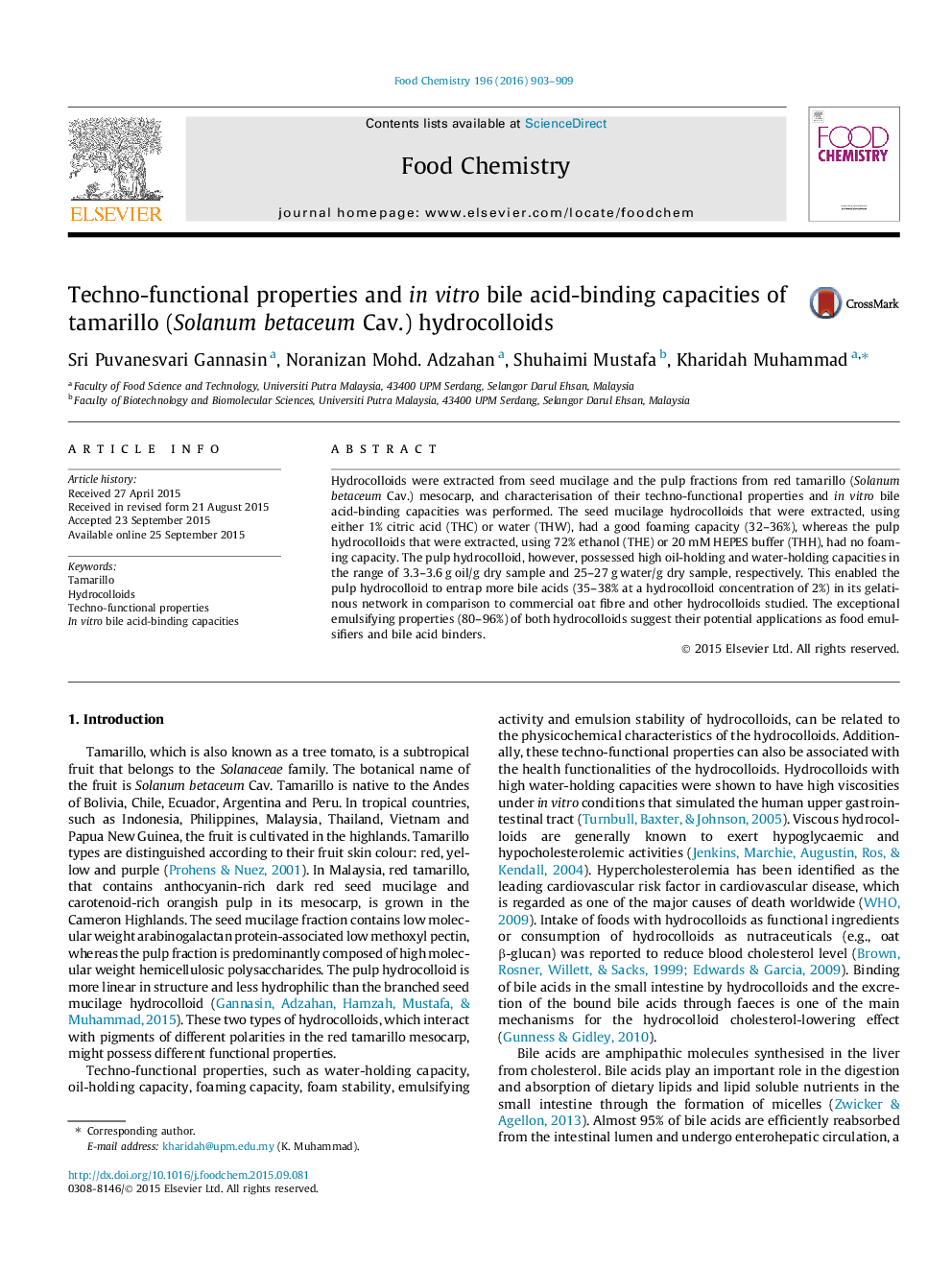| Article ID | Journal | Published Year | Pages | File Type |
|---|---|---|---|---|
| 1184214 | Food Chemistry | 2016 | 7 Pages |
•Tamarillo seed mucilage hydrocolloid has good foaming properties.•Tamarillo pulp hydrocolloid holds water or oil more than other hydrocolloids studied.•Both hydrocolloids possessed exceptional emulsifying properties.•Bile acid-binding capacity of pulp hydrocolloid was higher than commercial oat fibre.
Hydrocolloids were extracted from seed mucilage and the pulp fractions from red tamarillo (Solanum betaceum Cav.) mesocarp, and characterisation of their techno-functional properties and in vitro bile acid-binding capacities was performed. The seed mucilage hydrocolloids that were extracted, using either 1% citric acid (THC) or water (THW), had a good foaming capacity (32–36%), whereas the pulp hydrocolloids that were extracted, using 72% ethanol (THE) or 20 mM HEPES buffer (THH), had no foaming capacity. The pulp hydrocolloid, however, possessed high oil-holding and water-holding capacities in the range of 3.3–3.6 g oil/g dry sample and 25–27 g water/g dry sample, respectively. This enabled the pulp hydrocolloid to entrap more bile acids (35–38% at a hydrocolloid concentration of 2%) in its gelatinous network in comparison to commercial oat fibre and other hydrocolloids studied. The exceptional emulsifying properties (80–96%) of both hydrocolloids suggest their potential applications as food emulsifiers and bile acid binders.
